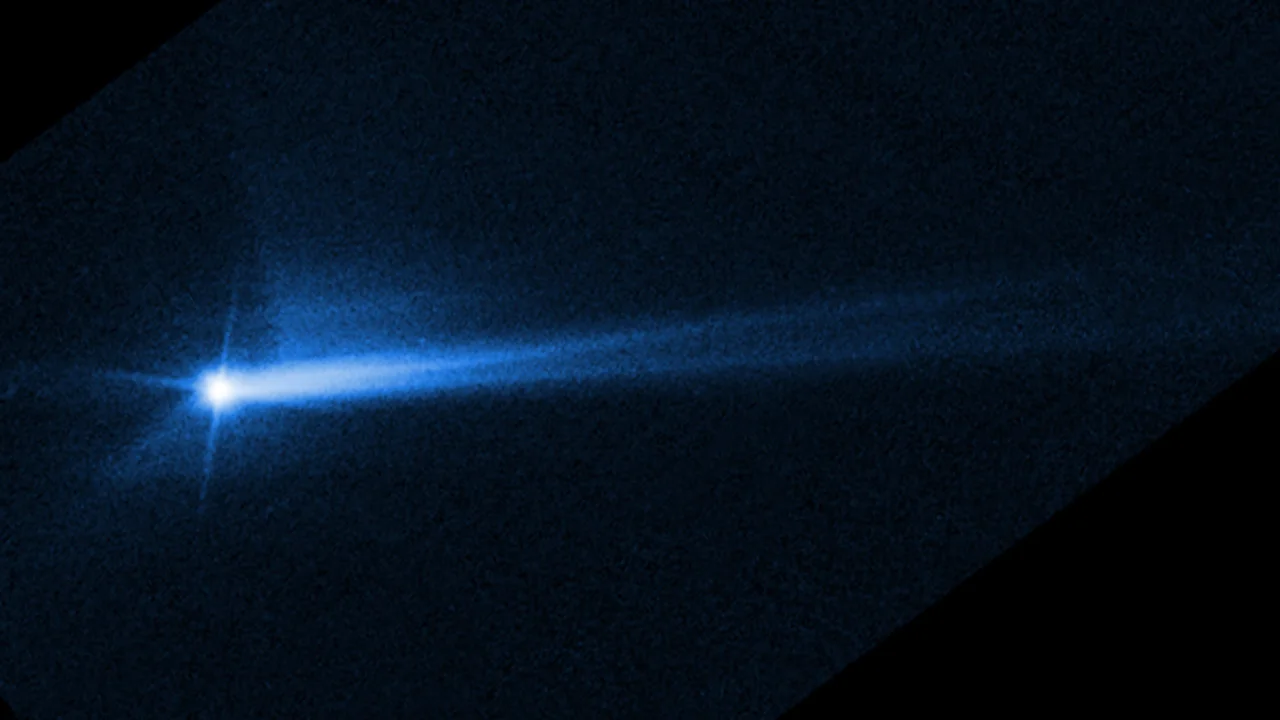
Success! NASA's DART changed the orbit of target asteroid Dimorphos
NASA has proven they are serious as a defender of planet Earth.
Astronomers have now confirmed that NASA's Double Asteroid Redirection Test was a complete success! DART is the very first full-scale demonstration of asteroid deflection technology, and it marks the first time a spacecraft has intentionally changed the motion of a celestial object.
When the DART spacecraft homed in and slammed into asteroid Dimorphos on September 26, 2022, NASA's goal was to test how effective a 'kinetic impactor' would be in protecting Earth from a dangerous asteroid. Although it involves crashing a robotic probe into an asteroid, the idea behind a kinetic impactor isn't to destroy the incoming threat (which could actually make the situation worse). Instead, each impact is intended to push the asteroid, to divert it off of its dangerous course and on to a path around the Sun where it will never endanger us again.
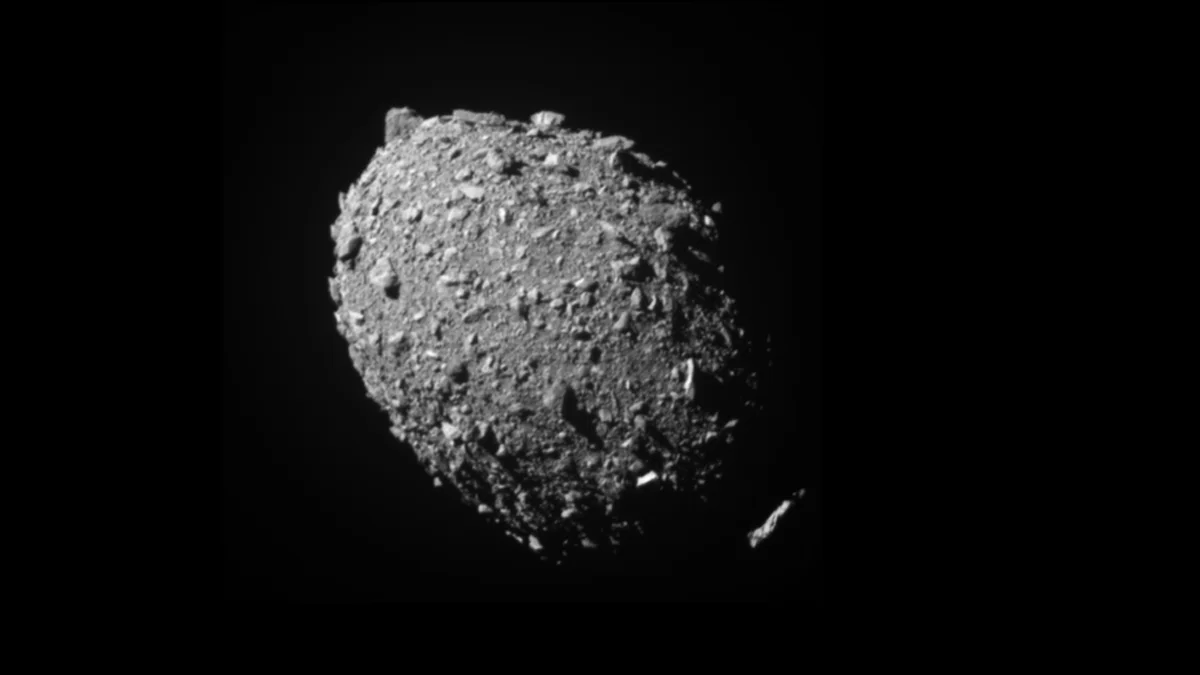
This close-up view of Dimorphos was captured by DART's DRACO Camera, as the spacecraft was hurtling towards the asteroid at 24,000 km/h. Credit: NASA/Johns Hopkins APL
In the immediate aftermath of the impact, we knew that the DART spacecraft had successfully completed its mission.
All by itself, it had located Dimorphos, locked itself on course, and flew into the asteroid at top speed. So, we knew then that we had the technology and know-how to launch a planetary defence mission.
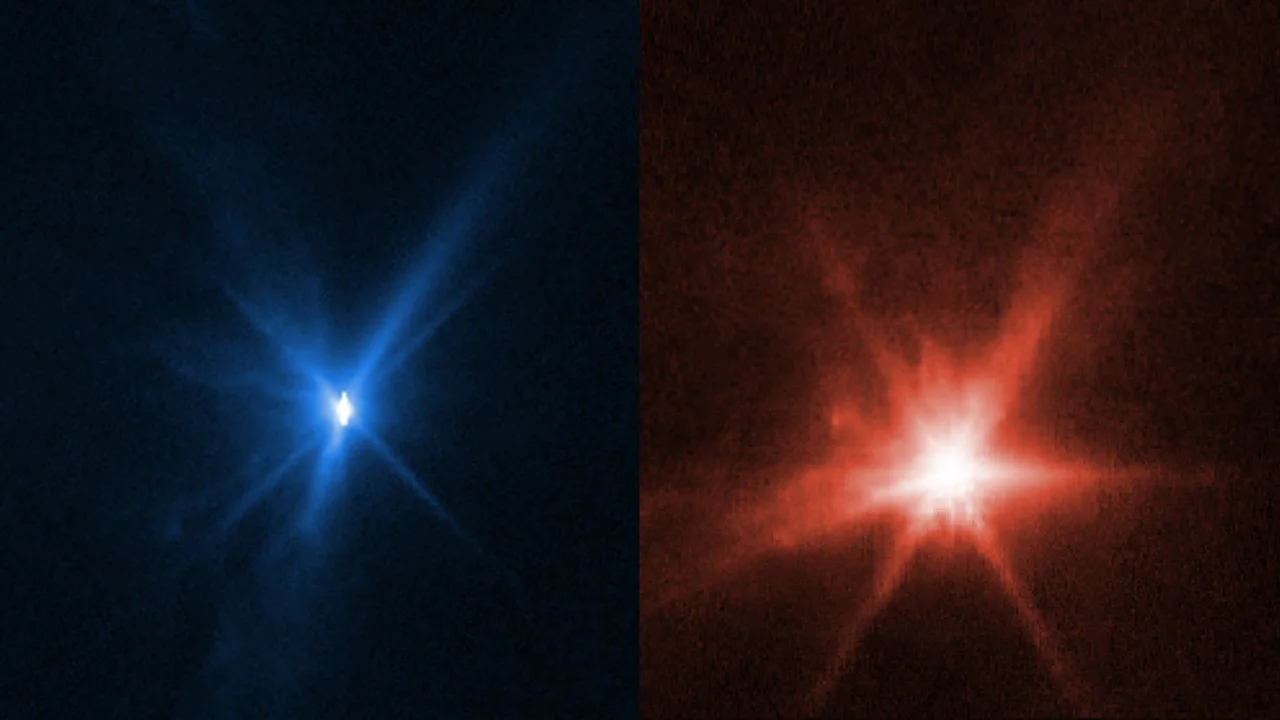
This composite image shows the plumes of debris blasted away from Dimorphos by DART. On the left is the view from the Hubble Space Telescope, while on the right is the view from the James Webb Space Telescope. Credit: NASA/ESA/CSA
The only thing left was to figure out the results of the test.
So, in the weeks since then, astronomers have been carefully watching Dimorphos as it continued to orbit its 'parent' asteroid, Didymos. They were looking for signs that the smaller asteroid's orbit had changed.
On Tuesday, October 11, NASA announced that the test was a complete success!
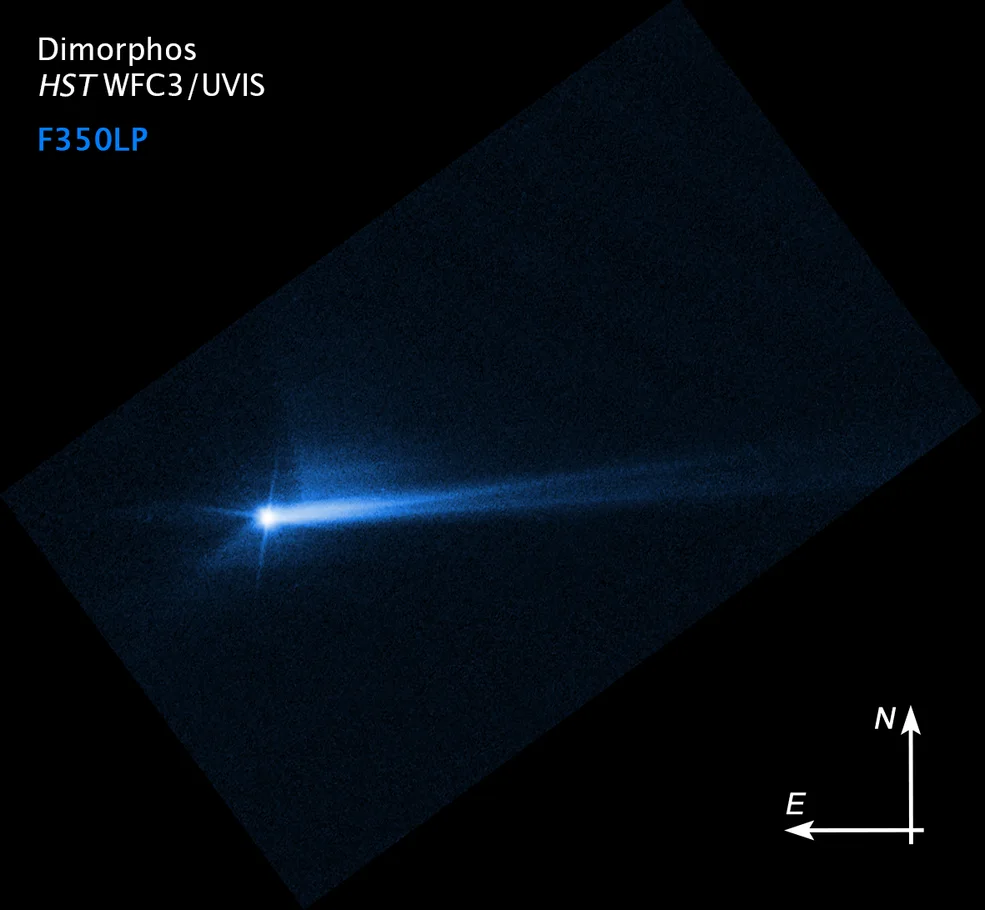
This image from the Hubble Space Telescope was taken on Oct. 8, 2022, and shows the tail of debris from Dimorphos nearly 12 days after DART intentionally impacted with the asteroid on Sep. 26, 2022. The shape of that tail has changed over time. Scientists are continuing to study this material and how it moves in space, in order to better understand the asteroid. Credits: NASA/ESA/STScI/Hubble
"All of us have a responsibility to protect our home planet. After all, it's the only one we have," NASA Administrator Bill Nelson said during the announcement. "This mission shows that NASA is trying to be ready for whatever the universe throws at us. NASA has proven we are serious as a defender of the planet. This is a watershed moment for planetary defence and all of humanity, demonstrating commitment from NASA's exceptional team and partners from around the world."
Before DART's impact, Dimorphos orbited Didymos once every 11 hours and 55 minutes. Now, observations show that its orbit has been reduced to around 11 hours and 23 minutes.
Although NASA had decided that a change of just 73 seconds would indicate success, DART knocked roughly 34 minutes off Dimorphos' orbit!
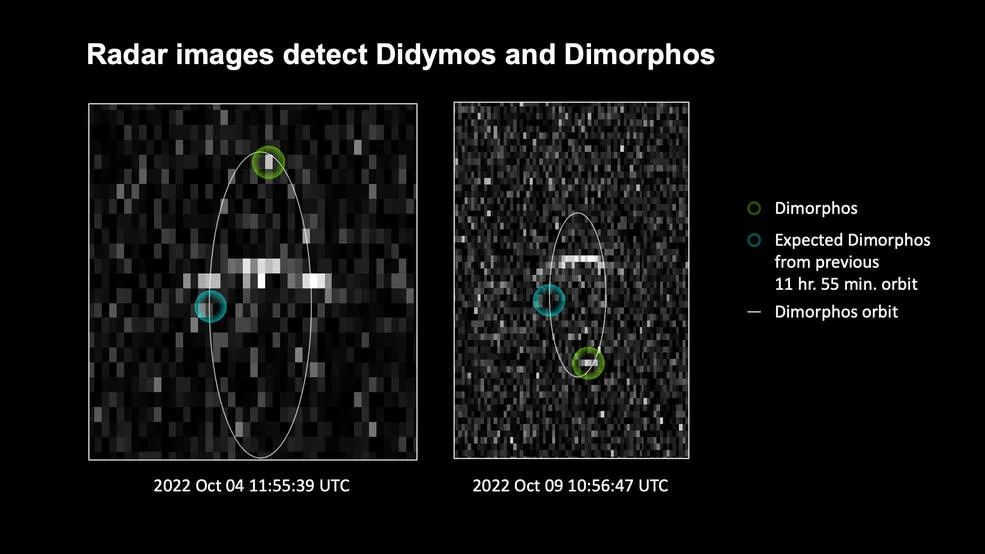
These images show radio waves reflected off Didymos and Dimophos from NASA's Goldstone Observatory, and the Green Bank Observatory. While the green circles indicate the actual location of Dimorphos, the blue circles show where the asteroid should be, based on its original orbit. Credits: NASA/Johns Hopkins APL/JPL/NASA JPL Goldstone/NSF Green Bank Observatory
"This result is one important step toward understanding the full effect of DART's impact with its target asteroid," Lori Glaze, director of NASA's Planetary Science Division, said in a press release. "As new data come in each day, astronomers will be able to better assess whether, and how, a mission like DART could be used in the future to help protect Earth from a collision with an asteroid if we ever discover one headed our way."
WATCH: DART's mission to crash into an asteroid
What's next?
The scientists aren't done with the DART results yet. More telescopic observations of Didymos and Dimorphos will narrow down the rough estimate of the smaller asteroid's orbit time.
Additionally, further study of the plumes of debris ejected from Dimorphos during the crash will teach them more about the asteroid's structure, and about how much of the energy of the crash went directly into diverting its orbit.
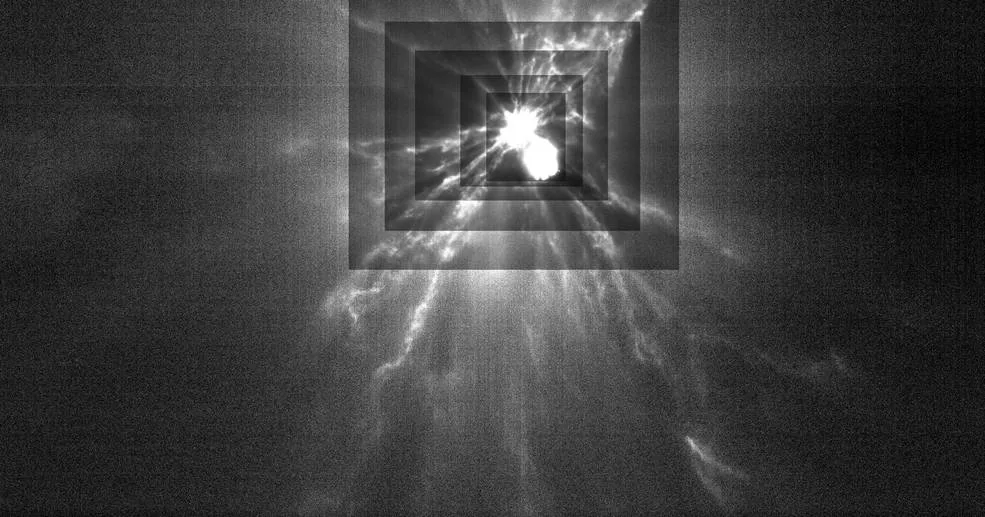
This image from the Italian Space Agency's LICIACube shows the plumes of ejecta streaming from Dimorphos after DART made impact with it on Sept. 26, 2022. Each rectangle represents a different level of contrast in order to better see fine structure in the plumes. Credits: ASI/NASA/APL
"DART has given us some fascinating data about both asteroid properties and the effectiveness of a kinetic impactor as a planetary defence technology," Nancy Chabot, the DART coordination lead from the Johns Hopkins Applied Physics Laboratory (APL), told NASA. "The DART team is continuing to work on this rich dataset to fully understand this first planetary defence test of asteroid deflection."






